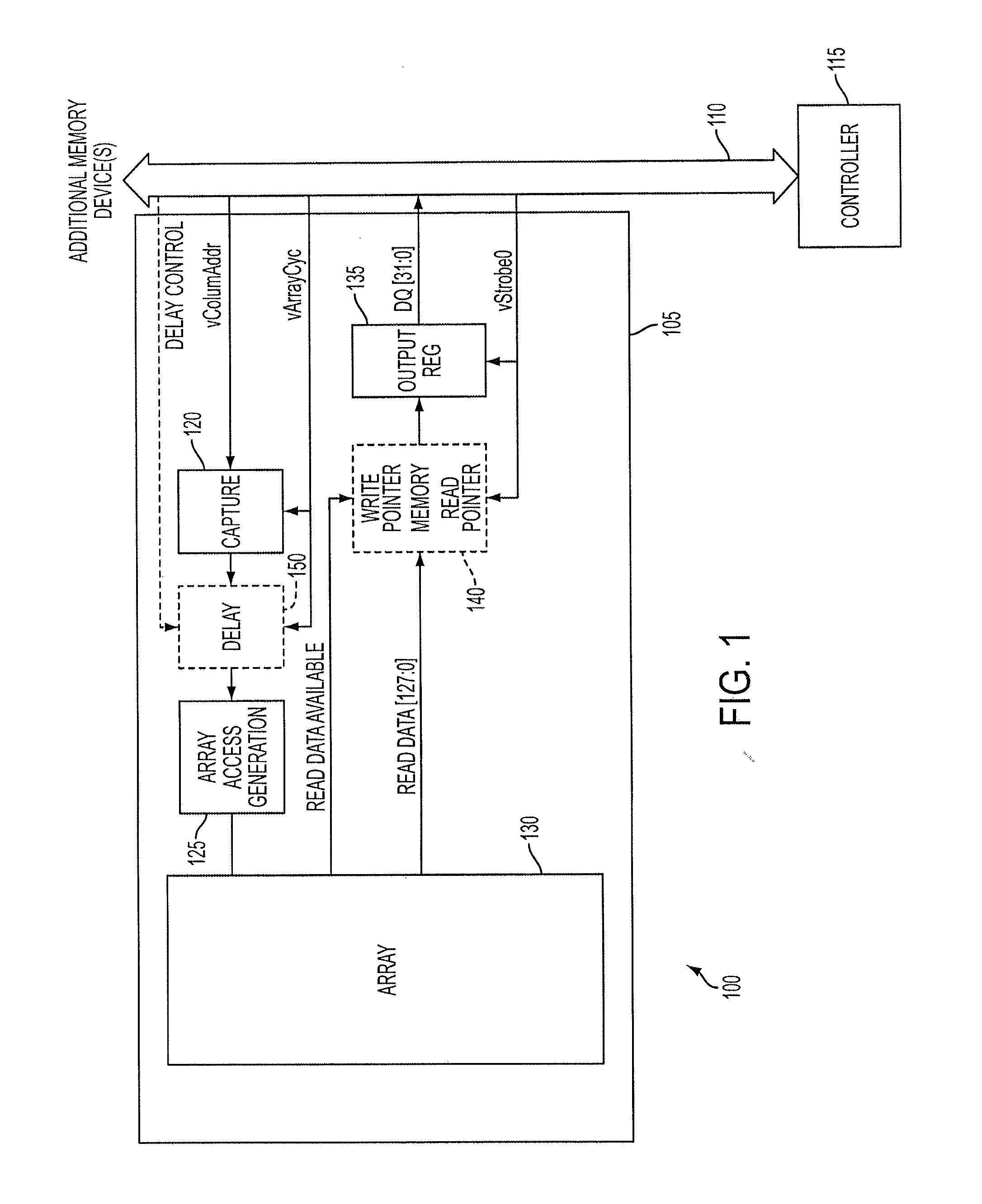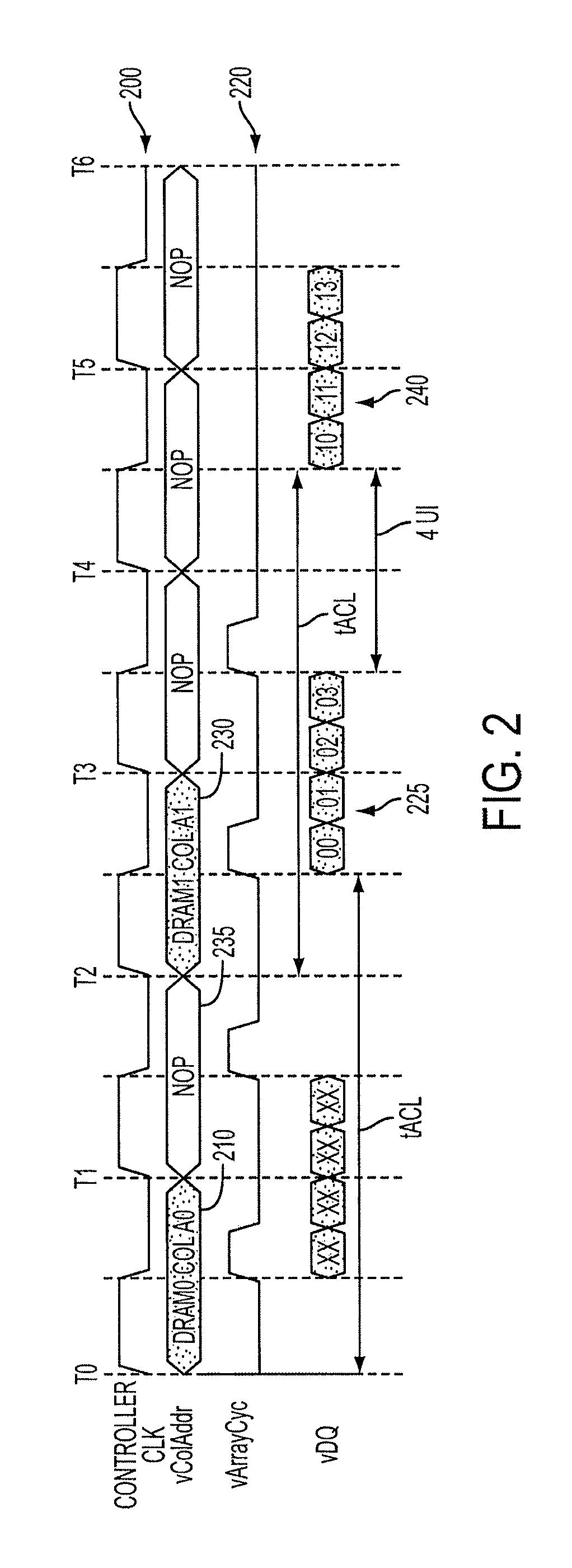Memory systems and methods for controlling the timing of receiving read data
a memory device and read data technology, applied in memory systems, climate sustainability, instruments, etc., can solve the problems of increasing the operating speed of memory devices, requiring a certain amount of time to service, and the increase in the speed of devices cannot keep up with the increase in the operating speed of processors
- Summary
- Abstract
- Description
- Claims
- Application Information
AI Technical Summary
Benefits of technology
Problems solved by technology
Method used
Image
Examples
Embodiment Construction
[0014]Embodiments of the present invention are directed toward memory systems and methods for controlling memory devices. Certain details are set forth below to provide a sufficient understanding of embodiments of the invention. However, it will be clear to one skilled in the art that embodiments of the invention may be practiced without various of these particular details. In some instances, well-known circuits, control signals, timing protocols, and software operations have not been shown in detail in order to avoid unnecessarily obscuring the described embodiments of the invention.
[0015]A system 100 according to an embodiment of the present invention is shown in FIG. 1. The system 100 includes a plurality of memory devices, including memory device 105. The memory device 105 and other memory devices (not shown) share an interface 110 with a controller 115. The interface 110 may be implemented, for example, as a bus including a high-speed bus. In some embodiments, the memory device...
PUM
 Login to View More
Login to View More Abstract
Description
Claims
Application Information
 Login to View More
Login to View More - R&D
- Intellectual Property
- Life Sciences
- Materials
- Tech Scout
- Unparalleled Data Quality
- Higher Quality Content
- 60% Fewer Hallucinations
Browse by: Latest US Patents, China's latest patents, Technical Efficacy Thesaurus, Application Domain, Technology Topic, Popular Technical Reports.
© 2025 PatSnap. All rights reserved.Legal|Privacy policy|Modern Slavery Act Transparency Statement|Sitemap|About US| Contact US: help@patsnap.com



